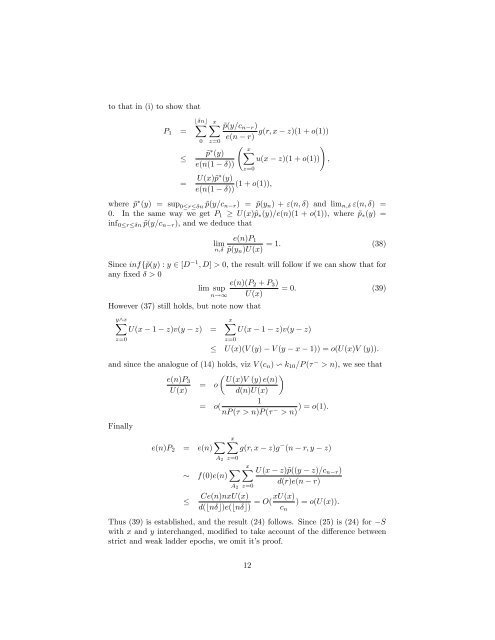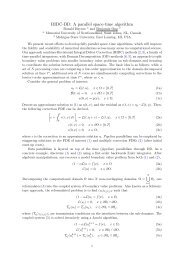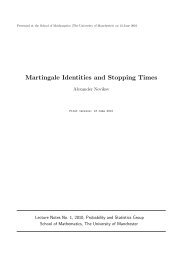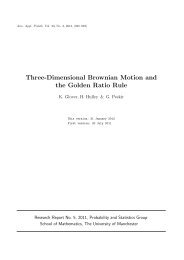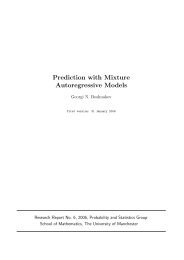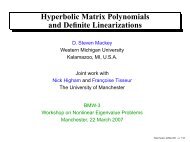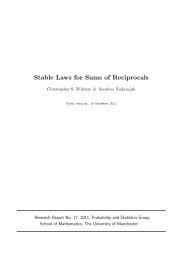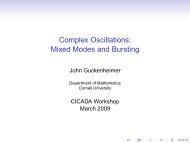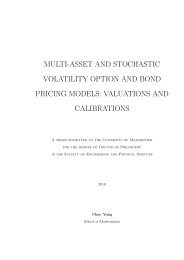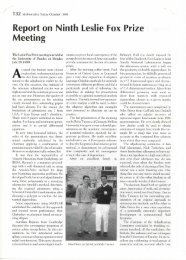Local Behaviour of First Passage Probabilities - MIMS - The ...
Local Behaviour of First Passage Probabilities - MIMS - The ...
Local Behaviour of First Passage Probabilities - MIMS - The ...
You also want an ePaper? Increase the reach of your titles
YUMPU automatically turns print PDFs into web optimized ePapers that Google loves.
to that in (i) to show thatP 1 =bncX0xXz=0~p (y)e(n(1 ))~p(y=c n r )g(r; x z)(1 + o(1))e(n r)!xXu(xz=0= U(x)~p (y)(1 + o(1));e(n(1 ))z)(1 + o(1))where ~p (y) = sup 0rn ~p(y=c n r ) = ~p(y n ) + "(n; ) and lim n; "(n; ) =0: In the same way we get P 1 U(x)~p (y)=e(n)(1 + o(1)), where ~p (y) =inf 0rn ~p(y=c n r ); and we deduce thate(n)P 1lim= 1: (38)n; ~p(y n )U(x)Since inff~p(y) : y 2 [D 1 ; D] > 0; the result will follow if we can show that forany …xed > 0e(n)(P 2 + P 3 )lim sup= 0: (39)n!1 U(x)However (37) still holds, but note now thatXy^xU(x 1 z)v(y z) =z=0xXU(x 1 z)v(y z)z=0 U(x)(V (y) V (y x 1)) = o(U(x)V (y)):and since the analogue <strong>of</strong> (14) holds, viz V (c n ) v k 10 =P ( > n); we see that e(n)P 3 U(x)V (y) e(n)= oU(x)d(n)U(x)1= o(nP ( > n)P ( > n) ) = o(1):Finallye(n)P 2 = e(n) X xXg(r; x z)g (n r; y z)A 2z=0 f(0)e(n) X A 2xXz=0U(x z)~p((y z)=c n r )d(r)e(n r)Ce(n)nxU(x)d(bnc)e(bnc) = O(xU(x) ) = o(U(x)):Thus (39) is established, and the result (24) follows. Since (25) is (24) for Swith x and y interchanged, modi…ed to take account <strong>of</strong> the di¤erence betweenstrict and weak ladder epochs, we omit it’s pro<strong>of</strong>.c n;12


